Coffee shop hand brewing genre-"standard punching method" brewing process and parameter explanation
For professional baristas, please follow the coffee workshop (Wechat official account cafe_style)
If the cafes I visited are mainly hand-brewed, about nine and a half of the ten families use similar or exactly the same cooking methods. If this is introduced in most books related to coffee brewing, it should not be too much for me to call it "standard brewing".
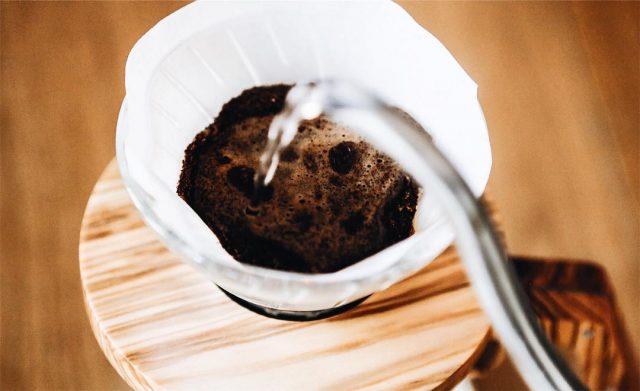
The general process of this kind of cooking is as follows:
1. Folding filter paper
2. Put the filter paper correctly on the filter cup (wash the filter paper or not? )
3. Pour the ground coffee powder into the filter paper
4. Flatten the coffee powder (some would suggest digging a hole, but I don't)
5. Steaming by water injection and cutting off water
6. secondary water injection, circling back and forth in the shape of "Yi"
7. Water cut off for the second time
8. Three times of water injection, repeat the circle in the shape of "Yi"
9. Cut off the water after the predetermined amount of water, and remove the filter cup
Non-standard demonstration:
In terms of this brewing method, the data mentioned in the book "Coffee Taste" are: 15,20g coffee beans mixed with 150~200ml hot water, medium grinding (about the size of No. 2 sugar), all of which can be adjusted according to your personal preference.
The more powder, the thicker the taste, the less the powder, the thinner the taste; the finer the grinding, the richer the flavor, the thicker the grinding, the cleaner the flavor. It's roughly like this relationship.
In addition, it may further affect the taste of brewed coffee, including "water temperature", "water injection speed", "water injection height", "circle speed", "circle range", "steaming time" and "water cut-off times".
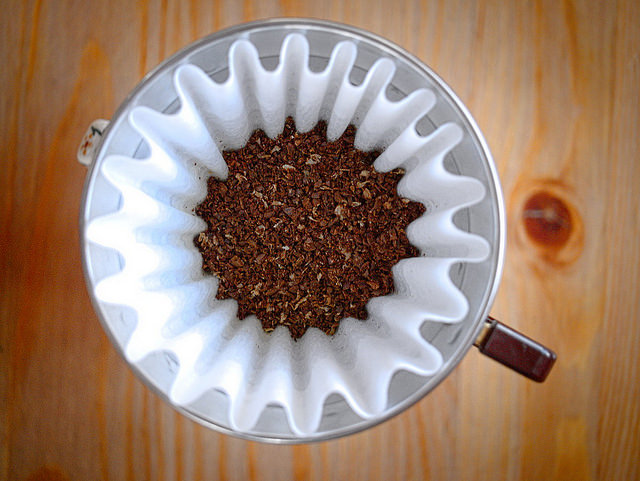
About the water temperature:
The temperature of the boiling water is like the heat of cooking.
Basically, the higher the water temperature, the higher the coffee taste, which is commonly known as the coffee flavor in the middle and back, while the lower water temperature will make the sour flavor of coffee beans more obvious. Generally speaking, it will fall between 80 ℃ and 95 ℃, but there is also a higher and lower possibility, depending on the roasting degree of coffee beans and what kind of flavor the brewers want to present.
I usually rinse shallow baked beans at high temperature and deep baked beans at lower temperatures.
About the speed of water injection:
The speed of water injection is the amount of water.
The speed of water injection affects the thickness of the coffee taste, the slower the speed, the more time the aroma factor in the coffee will dissolve into the hot water, and the flavor of the coffee will be stronger. On the contrary, if the water injection speed is too fast, the aroma factor in the coffee will release less, and the taste will be relatively thin.
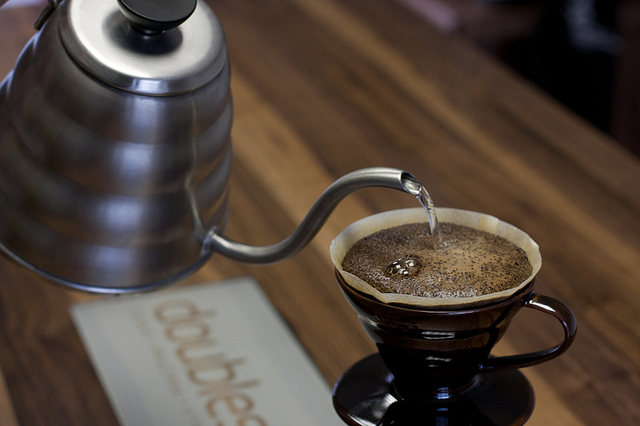
About the height of water injection:
In theory, when the size of the water column is the same, the higher the height of the spout from the liquid level, the stronger the force of the water column hitting the coffee powder. On the contrary, the lower the height of the water column from the liquid level, the smaller the force of the water column hitting the coffee powder.
This is also one of the factors that will directly affect the mixing of coffee powder in the filter cup.
Therefore, some experts will change the height of water injection depending on the coffee powder in the filter cup when brewing. The middle part of the conical filter cup is easy to produce coffee powder accumulation, so some people will increase the height of water injection when they go back to the middle, so that the stirring force is stronger, so that the powder layer will not be extracted because of the accumulation. Lower the height when the water injection is wound to the edge, so that the stirring force is less.
Of course, there is also a technique called throwing water! To put it simply, it combines the above three factors. In the process of circling, the height and quantity of water injection are changed all the time, and the water column is injected as if it were thrown out at a faster speed. Of course, for coffee powder, the stirring force will be slightly greater, but there are also some coffee powder that is not so strong.
About the winding speed:
The speed of the circle will affect how the coffee powder is stirred in hot water, just like when we hold a spoon to dissolve the sugar in the water, the faster the stirring, the faster the sugar dissolves. In my personal experiment, there will be a slight difference in taste.
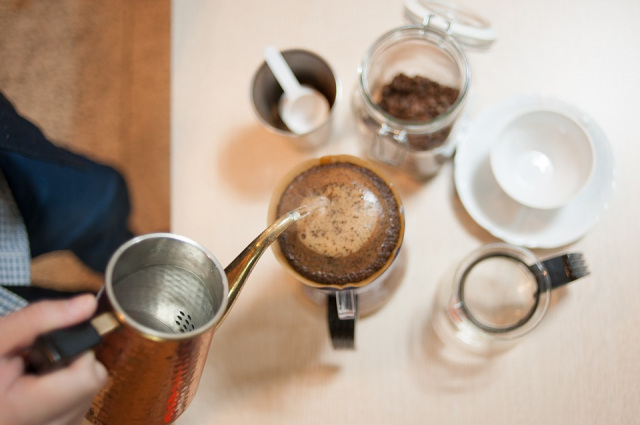
About the circle range:
Usually when we do hand flushing, we will keep a small part of the edge and do not inject water, the intention is not to let the hot water pass through the coffee powder layer to bring out the aroma factor in the coffee, if the coffee is poured directly onto the filter paper, it is easy to flush out coffee that is too thin.
In fact, the scope of the circle is also equal to the range of stirring. we will hope that the coffee powder in the filter cup can be evenly stirred in the process of hand flushing.
If it is a little more advanced, it may be so fastidious that the winding speed in a certain range will be adjusted to adjust the mixing of coffee powder in the filter cup. (however, in terms of the shooting situation in my film, too much emphasis on circling around the edge is a bad demonstration, and good children should not learn.)
About the way to circle:
If it is a simple circle, as far as I know, there are two ways to circle: the first is to go out in time and then back clockwise. The other is to go out clockwise and come back counterclockwise. The taste of the coffee brewed by the two methods will also have a slight difference, and those who are interested can try it (personally, I will prefer the latter)
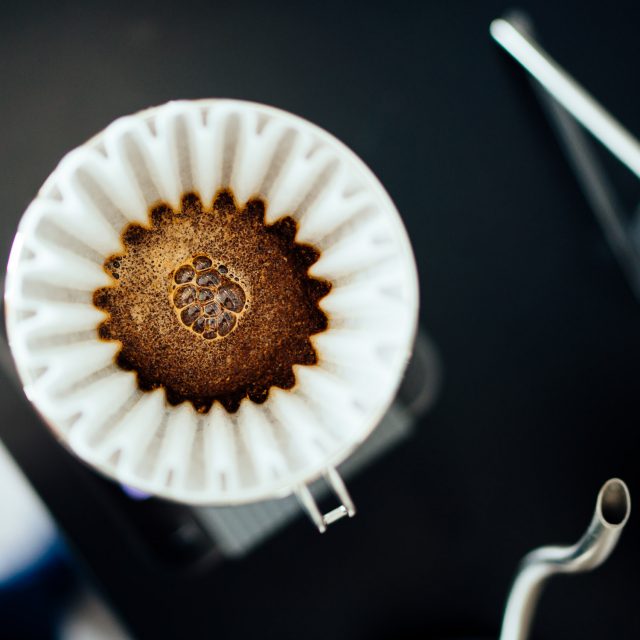
About the steaming time:
As mentioned earlier, the procedure of steaming is like opening the door, which is a very important procedure for releasing coffee aroma factor. To put it simply, if the steaming time is too short, it is like the door is not open enough, and it is inconvenient to get in and out. If the steaming time is too long, it is like tearing down the whole wall. Naturally, everything in the house will be easily removed.
About the number of water outages:
The time to cut off the water depends on the height of the liquid level in the filter cup.
We know that when the amount of water is too much, the taste of coffee will be too thin, when the amount of water is too small, the taste will be too strong. But similarly, if the brewing time is too long, it is easy to boil the miscellaneous smell of coffee, and the brewing time is too short to fully release the flavor of the coffee; moreover, while injecting water, it is also tantamount to stirring the coffee powder in the filter cup, and too much stirring will make the coffee overboiled.
Therefore, in order to make the flavor of the coffee not too heavy or too thin at the same time, and take into account the taste of the coffee, so the method of cutting off the water is adopted.
Simply put, the step of turning off the water is a bit like stepping on the brakes, which is used to control the rhythm of the extraction.
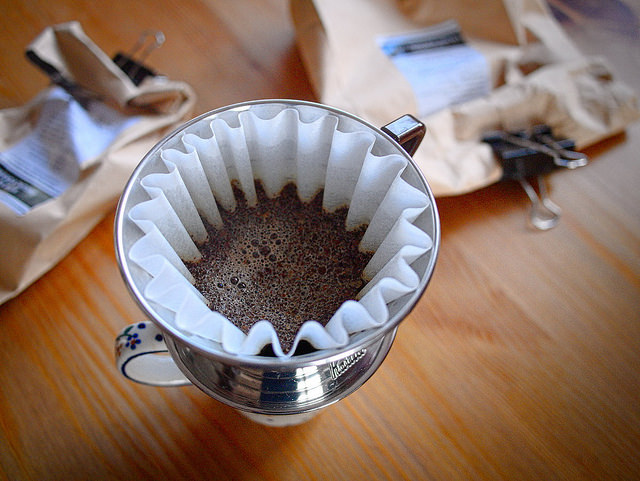
I usually do this to cut off the water.
The first time the water is cut off will be in the steaming stage. In order to make it easier to extract the coffee beans, I will inject about the same amount of hot water as the coffee powder for the first time, and then cut off the water (but obviously, there is too much XD for the first time in the film).
When the water is cut off for the second time, after the first injection after steaming, I usually inject water with a thinner water column, while keeping the thicker edge, slowly until the edge of the coffee powder layer is about to be paved, and there is still a little protruding edge between the powder layer and the filter cup, and then cut off the water.
After the third water injection, a thicker water column will be used to circle, and the range of the circle will be larger, until the liquid level is completely flattened. If there is a fourth water injection, it must be to make up for the amount of coffee.
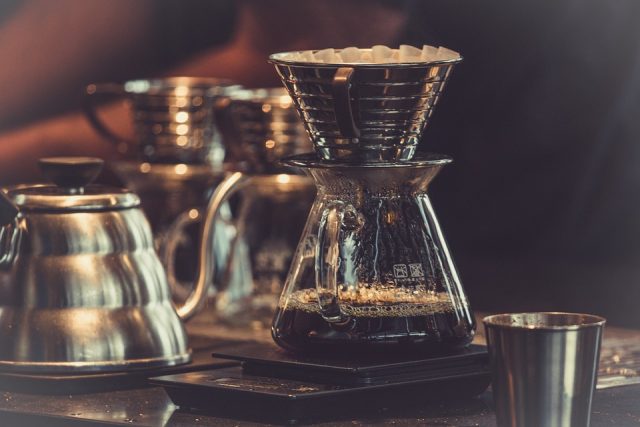
All in all, what this method of hand flushing, which I call "standard flushing", pursues is to evenly stir the coffee powder in the filter cup with hot water so that the flavor of the coffee can be completely released. Therefore, when tasting the coffee, we can fully taste the flavor changes of different layers before, during and after the coffee.
The article is from @ Mr. Insane bear
Author: Ma Jixiong
Important Notice :
前街咖啡 FrontStreet Coffee has moved to new addredd:
FrontStreet Coffee Address: 315,Donghua East Road,GuangZhou
Tel:020 38364473
- Prev
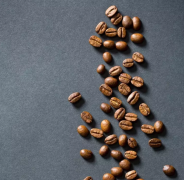
The influence of 90 + three Patent treatments on Coffee Flavor difference of 90 + Coffee treatment
Solkiln: the so-called method is a special treatment of 90 + company's patented technology, which dries the fresh coffee fruit in a house originally used to dry wood, in which special equipment is used to control the temperature and humidity needed to maintain the stability of the internal environment, while eliminating the impact of local climate on coffee. Red: the so-called red processing is 90 +.
- Next
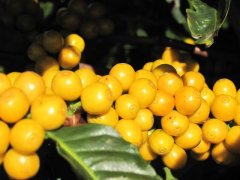
Baking introduction to the flavor and taste characteristics of Rosa koraiensis treated by Colombian Coca anaerobic fermentation
In the central part of the Valle del Cauca region of Colombia, there are many coffee estates, including Cerro Azul, Las Margaritas, La Esperanze, Potosi and Hawaii, managed by the Luis and Rigoberto Herrera brothers, who are the third generation of the coffee grower family. These estates, in 1945, first introduced different varieties.
Related
- What is the meaning of lactic acid fermentation with coffee bean treatment?
- How to judge the state of foam by sound?
- How does the latte pull out the unicorn pattern? Come to get for a little trick to improve the flower pull!
- Will flower pulling affect the taste of the latte?
- Do you know the history of coffee?
- The difference between honey treatment and sun washing what is raisin honey treatment?
- What kind of milk can a novice use to make coffee foam to keep the foam longer? The correct method and skills of milking tutorial sharing
- Why do washed coffee beans taste sour? Flavor characteristics of washed Coffee
- Introduction to the skill of how to practice the size and height of water injection around the circle of hand-brewed coffee
- How do beginners practice coffee flower drawing from scratch?

